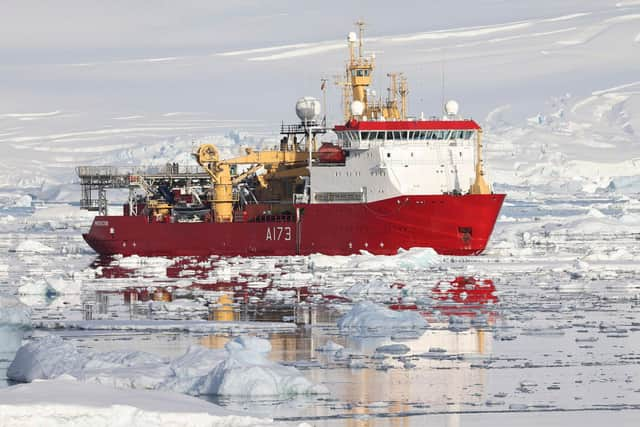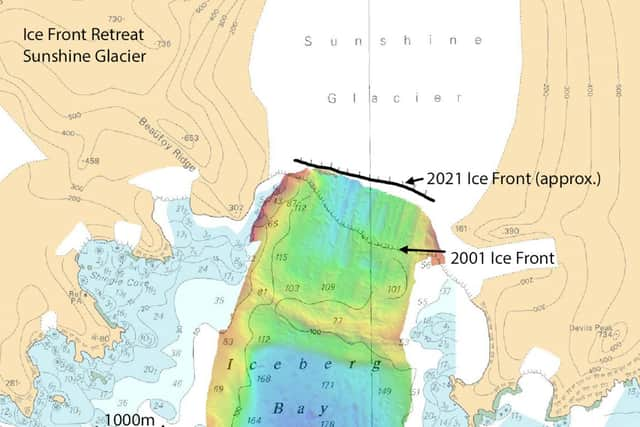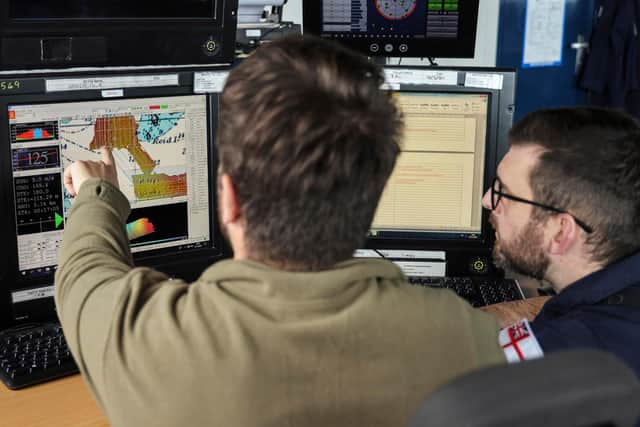Royal Navy's Antarctic research ship highlights impact of climate change as huge glacier melts
This article contains affiliate links. We may earn a small commission on items purchased through this article, but that does not affect our editorial judgement.
and live on Freeview channel 276
The mighty Sunshine Glacier has shrunk by one seventh in 20 years – an area the size of more than 130 football pitches has melted away.
Where HMS Protector’s small hi-tech survey boat sailed was a towering wall of ice some 700 metres from the glacier’s snout – or end – just two decades ago.
Advertisement
Hide AdAdvertisement
Hide Ad

The former Portsmouth-based icebreaker and survey ship recorded the worrying changes when she visited Coronation Island – a forbidding lump of rock and ice 45km long and the largest isle in the South Orkney chain.
It was the first visit to the inhospitable, uninhabited island since 2017 and provided a rare opportunity for the ship and survey motor boat to conduct survey activity in the archipelago’s ice-filled glacial bays.
Protector was asked to update existing charts of the waters around the island – including Iceberg Bay, where Sunshine Glacier spills into the ocean.
Here the mass of ice and rock – continuously moving at around 25 centimetres a day – ends its five-kilometre journey. Enormous chunks of blue and white ice the size of a house, or larger, break off, and bob in the bay which they give their name to.
Advertisement
Hide AdAdvertisement
Hide Ad

Protector and her launch boat James Caird IV – crammed with hi-tech sensors but able to use them in shallower, tighter waters her mothership cannot access – set about surveying the three-kilometre-wide bay, dwarfed in a primeval world of rocks and seracs, huge towers of ice.
Protector’s powerful computers turn that data into colourful 3D graphics which show the topography of the seabed and reveal clues about the formation of the bay.
Lieutenant Michael Wafer said: ‘The actual position of the ice front and towering seracs (pillars of ice) was almost 700 metres north of the 2001 charted position. It’s quite possibly just more demonstrable proof of climate change in action.’
Dr Robert Larter, marine geophysicist at British Antarctic Survey, who has been involved in similar studies on the glaciers around the Antarctic Peninsula, said Protector’s findings mirrored his organisation’s findings: 87 per cent of glaciers in the area have retreated over the past 75 or so years.
Advertisement
Hide AdAdvertisement
Hide Ad

‘Similar rapid retreat is occurring on many glaciers along the Antarctic Peninsula as a result of rapid regional warming – three times the average global rate – during the second half of the 20th Century,’ he said.
‘Along much of the western side of the peninsula, glacier retreat is also being driven by incursion onto the continental shelf of warm water from the deep ocean.
‘Loss of ice from Antarctica currently accounts for about 10 per cent of global sea-level rise – and the rate of ice loss has been steadily increasing over the past 30 years.’
Protector is the Royal Navy’s sole icebreaker, dedicated to spending summer in the southern hemisphere in and around the Antarctic peninsula supporting UK and international scientists’ understanding of the frozen continent.
Advertisement
Hide AdAdvertisement
Hide AdIn five months surveying to date since leaving her home port on Plymouth in the summer, Protector has scanned an area of 1,700 square kilometres of ocean – roughly the size of Greater London.
Looking for the latest Royal Navy updates from Portsmouth? Join our new Royal Navy news Facebook group to keep up to date.
A message from the Editor, Mark Waldron
You can subscribe here for unlimited access to our online coverage, including Pompey, with 70 per cent fewer adverts for less than 20p a day.
Comment Guidelines
National World encourages reader discussion on our stories. User feedback, insights and back-and-forth exchanges add a rich layer of context to reporting. Please review our Community Guidelines before commenting.
